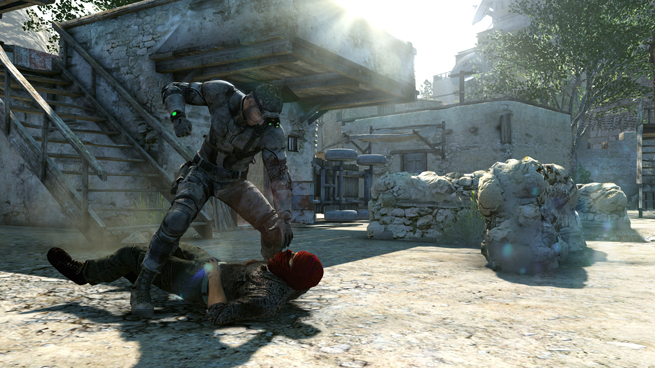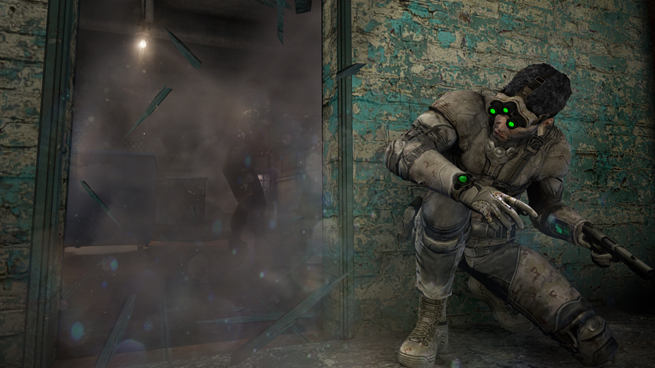Remember that missing package? His name’s Kobin. A few years previously, Andriy Kobin faked the hit-and-run murder of Sam’s daughter. Now he’s supplying weapons to the Engineers, a terror group that’s slowly cutting off America’s fingers. In 14 days, the Engineers will take away the U.S. fuel supply. In 20 days, they deprive America of power. In 31 days, freedom. In 40, blood.
But it’s the Libyan militants who nabbed Kobin and stashed him in a broke-down police station. Bad luck for them, because Sam’s just fine with killing everyone between him and his man. At least, he is with me at the wheel.
Picking apart a ton of thugs before they even know I’m whittling them away still feels so, so satisfying. I just can’t say Blacklist made it very challenging.
We ran an edited version of that beautifully rendered Benghazi mission — set very early in the campaign — but it never pushed very hard. Mainly, it’s that stone-stupid A.I. Baddies tend to pose with their back to Sam’s most likely approaches. They react to Sam’s whistle with a “Huh?” and a blind walk to their doom every single time. If their buddy’s nearby, they have a cursory check-in before your target heads off alone. The buddy doesn’t look, follow up, or call out. The five or six guys who fell for my rooftop-hang gag? Par for the course. A second preview level set at night in rainy London upped the threat with attentive snipers on overwatch and a new enemy type, the Engineer, running the show. He’ll cheerfully send wave after wave of suicide drones after you. Best to Panther or Ghost him first. It’s not tough to do.
That’s the crazy thing about Blacklist. Sam feels near-perfect when you stealth the levels on either a lethal or nonlethal path. But the opposition only comes alive when you go full Assault on them.
Even then, a new accent on Sam’s returning Mark and Execute ability — tagging enemies for a cool multikill hit with the press of a button — requires them to do stupid things, too. It takes a melee kill to activate Mark and Execute, so even in a thick gunfight, somebody’s always willing to charge in and get beaten down. Rolling in with guns blazing causes a lot more problems than it solves, but tight, fluid controls and the ability to execute your marks at a full run makes solving those problems well worth blowing your own cover on occasion.
But Blacklist — which closely follows the patterns set down by Splinter Cell: Conviction — smartly breaks you out of your comfort zone for short stretches, sometimes uncomfortably so. Escorting Kobin to my extraction point prevented me from crouching, sneaking, taking cover, or any other Panthery tactic I’d relied on. I even had to hip-shoot the bad men who crashed through the doors to stop me. Then I had to defend that spot, Assault-style. Forced stealth sections turn up later on, including one towards the end of our London mission preview where I had to Ghost my way through a tiny room full of armed guards and men in hazmat suits. And again, I just walked around them, no sweat. Still not the most attentive terrorists in the world.
None of these departures go on for too long. Call them a good, well-rounded education. It’s just unfortunate that Blacklist’s major challenges came when it made me play against type. The game’s very good at keying into the different strategic choices you might make. Your opposition isn’t.
So yes, even without franchise veteran Micheal Ironside voicing him, Sam definitely feels like he’s back and, arguably for the first time, responding exactly the way he should in every situation. Hopefully, whether it’s on the harder difficulty mode or with some design tweaks, he’ll also get situations that make him work a little harder.
VentureBeat's mission is to be a digital town square for technical decision-makers to gain knowledge about transformative enterprise technology and transact. Learn More


